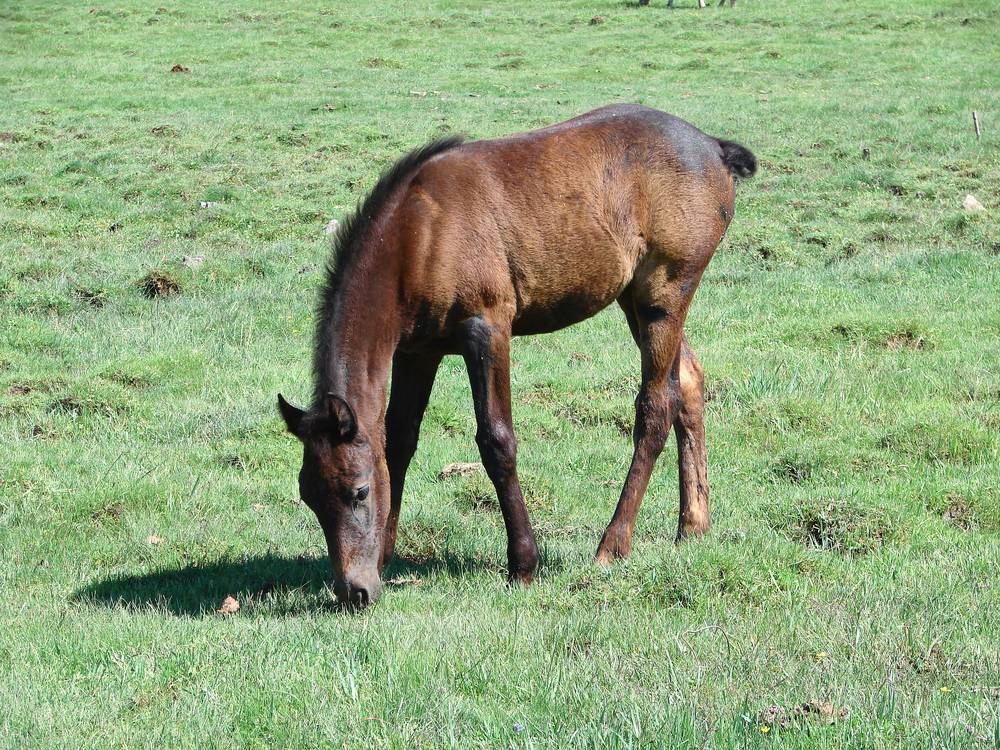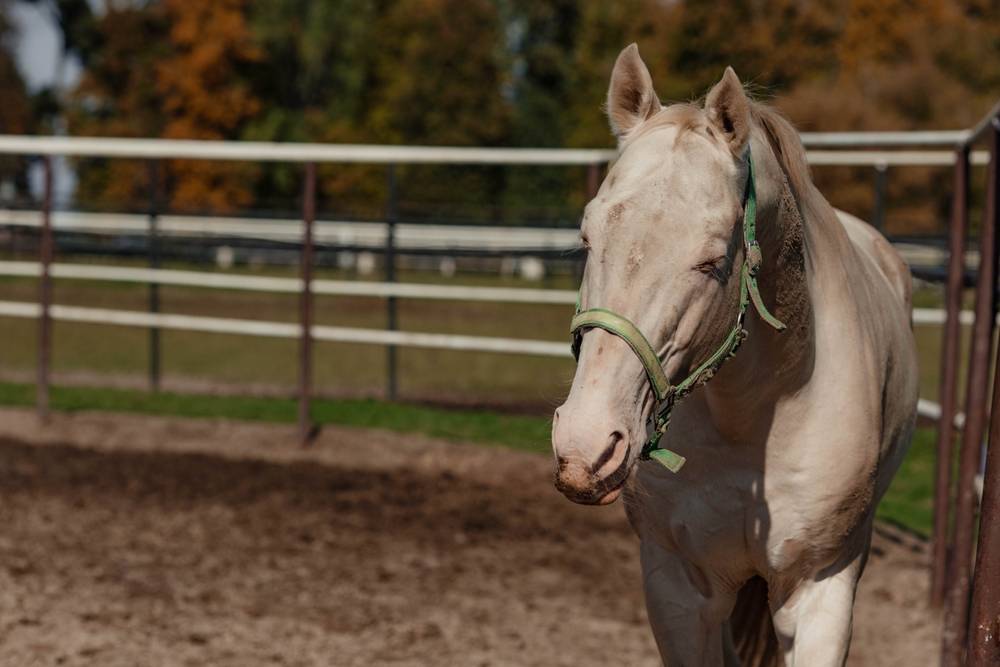
A horse’s flowing tail hair is a distinctive characteristic. However, have you ever wondered what lies beneath that abundant hair? Certain equines, either naturally or due to injury, experience hair loss in their tails. Let’s explore the fundamental structure of an equine tail when it lacks that massive hair covering.
So, What Does a Horse Tail Look Like Without Hair?
A horse’s tail without hair reveals pink skin covering an intricate web of blood vessels and muscles that control tail movement. Though functioning, the exposed area risks sunburn, trauma, and infection. A horse with no tail requires diligent protection and treatment to maintain their health and communication abilities.
The Normal Horse Tail
A horse’s tail comprises coarse outer guard hairs and finer undercoat hairs that, when combined, form its distinctive long and flowing structure. This unique composition serves to safeguard the underlying muscles and skin from sunburn, debris, and insects. The tail plays a crucial role in communication among horses, exhibiting different shapes across various breeds.
Horses, in their natural state, have voluminous and thick tail hairs that serve various functions. It protects them from flies and debris, as well as prevents sunburn on sensitive areas. Some owners trim the entire tail hair for aesthetics, while the muscular dock area allows for communication between animals. Different disciplines and breeds have distinct tail shapes and sizes based on their attributes and human uses. Some use a tail bag instead of trimming and cutting long hairs. Regular grooming is important for maintaining a healthy and clean tail.
Genetics undoubtedly contribute to tail hair volume in horses. However, unhealthy equines may experience hormone imbalances, anxiety, or other conditions that lead to excessive rubbing and breakage of tail hairs. This can result in a skimpy, ragged tail that not only lacks the luxurious drape but also becomes more susceptible to sunburn and fails to provide clear visual signals. In some cases, horses may experience temporary or permanent loss of chunks of tail hair, which can significantly impact both their form and function.

Horses That Naturally Lose Tail Hair
While most horses have lush tails, some equines inherit genetics for sparser areas. Certain primitive-type horses like Icelandics, Fjords, and Shetlands have sparser hair on their tail heads but maintain flowing bulk further down. The Camargue breed, native to France, has an overall thin and wispy tail that resembles cattle rather than typical horses. Despite sparse hair on their tails, there are still enough coarser guard hairs to provide sun and insect protection. The thinner areas blend with the remaining flowing hair portions seamlessly.
Due to various factors, equines may experience partial or complete hair loss in their tails. Sections that are broken, chewed, or rubbed off may expose the underlying skin, particularly in the upper two-thirds of the tail, that are more susceptible to abrasion. Hormonal imbalances, stress, or stable vices can lead to excessive chewing or rubbing of the tail, resulting in further hair loss. Medical conditions such as fungal infections can contribute to hair loss patches along the tail’s top and sides. The remaining hair depends on the extent of the original hair removal.
Fully Hairless Horse Tails
In rare cases of complete hair removal due to surgical necessity, previous injury, or ongoing self-harm, the entire muscular structure of the tail becomes exposed. This exposes the skin to harmful ultraviolet sunlight, necessitating the regular application of sunscreen to prevent burns or the development of melanoma. The absence of hair on the tail also inhibits the horse’s ability to communicate subtly through swishing motions, as well as naturally controlling flies and debris. The exposed skin is at risk of abrasions, wounds, frostbite, and irritation from urine, feces, and chemical irritants in a stable environment. Diligent management can help minimize these complications.
Photographs of completely hairless tails display the extensive network of blood vessels that nourish the tissues in the tail. The presence of stubble from the undercoat, which can be easily removed by rubbing, often creates a subtle shadow effect. The muscles and connective tissues that control tail movements remain intact, but the vulnerability in such a crucial area can lead to complications.
In severe cases, veterinary options may be available to partially conceal the exposed areas. What may appear aesthetically sparse or thinned to human eyes can still adequately meet the needs of horses. Wild equines are able to survive as long as some territorial hair remains present across a portion of their tails. However, horses under human management require additional precautions when the hair on their tails disappears.

Frequently Asked Questions
1. How Long Is a Horse’s Tail Without Its Hair?
The length of a horse’s tail without hair is determined by the underlying muscle structure, typically measuring approximately 3 feet or more, depending on the breed.
2. What Horse Breeds Are Prone to Losing Tail Hair?
Breeds such as Akhal-Teke, Friesians, Drafts, and Appaloosas, which have thick and long tail hair, are more susceptible to mechanical breakage. Breeds that are prone to hormonal issues like PPID may experience tail hair loss.
3. Can a Horse Live Without the Hair on Its Tail?
Sure! Horses can survive without their tail hair, but it is crucial to provide them with careful attention to avoid sunburn, injuries, and infections on the exposed skin.
4. How to Regrow Horse Tail?
Hair regrowth for the tail requires addressing sources of irritation, providing supplements for healthy skin and coat, using natural botanical washes to stimulate hair follicles, and safeguarding emerging hairs with protective wraps.
Conclusion
Although we often admire a horse’s flowing tail, it is important to recognize the intricate structure beneath. The tail consists of muscles, blood vessels, and nerves, all covered by delicate skin. However, certain factors such as breed characteristics, management issues, stable vices, or injuries can lead to the loss of hair, which can result in various complications. The extent of these complications depends on the original tail shape and the percentage of hair loss. Horse owners should seek veterinary guidance to prevent issues such as sunburn, infection, frostbite, self-inflicted injuries, or communication problems that may arise from complete or substantial hairlessness. While a bald tail may appear unusual, with proper protection and treatment, equines can continue to live comfortably without their beautiful locks.
